My PBP Bike: Contact Points
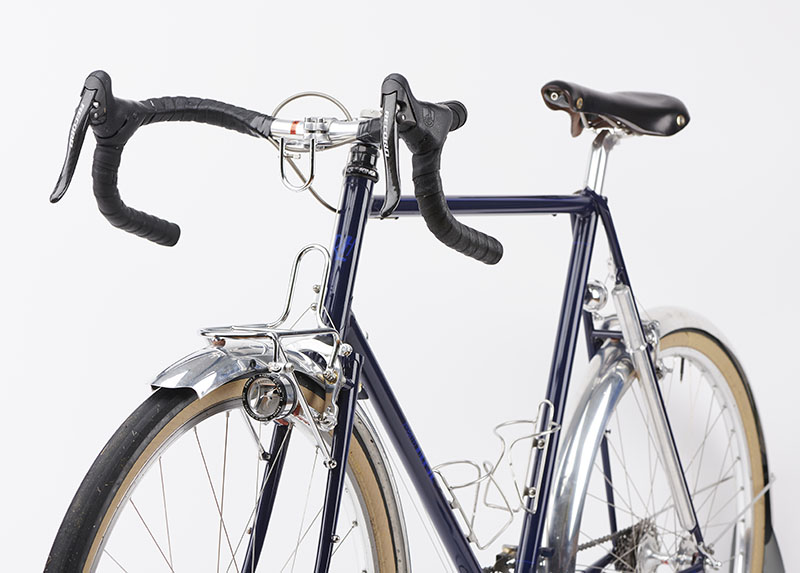
This year’s rides have been more self-supported than usual – cafe stops aren’t really part of the program right now. So the ‘new’ bike that I built for last year’s Paris-Brest-Paris has seen a lot of use, since it’s designed for riding long distances without stopping. In our series about the individual part choices of this build, let’s talk about the contact points.
Riding the 1200 km (750 miles) of Paris-Brest-Paris means spending a lot of time on the bike with little rest. Last year, my longest stop was about 1.5 hours, when I slept after riding 870 km (545 miles). And yet when I arrived in Paris after 56 hours on the road, I was tired, but there weren’t any aches and pains.
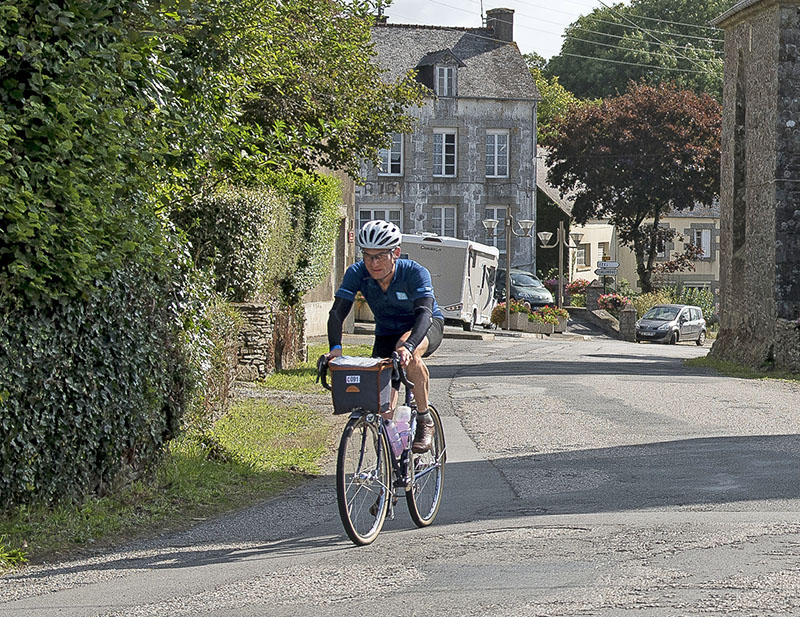
Comfort on a bike really depends on two things. The first is absorbing vibrations through supple, wide tires and a little suspension in the fork. The second is to make the contact points, where your body touches the bike, as anatomical as possible.
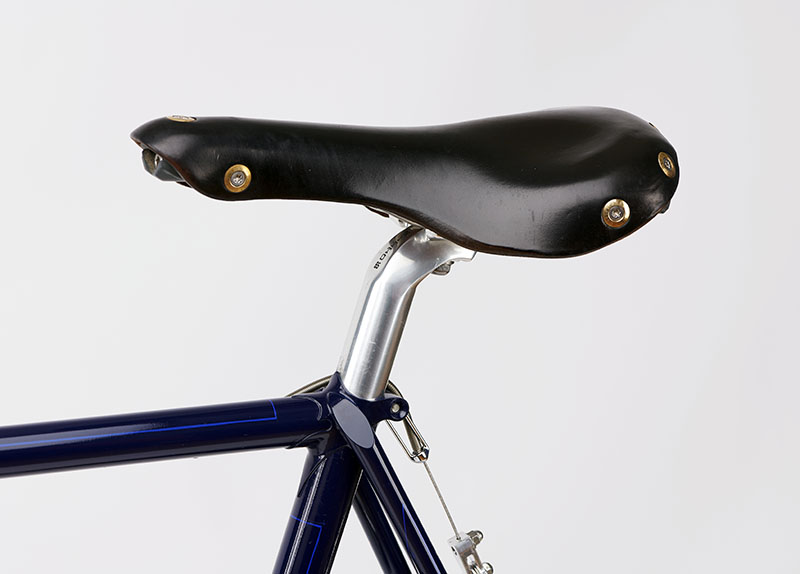
Discussions of contact points start with the saddle. Every cyclist has their preferred saddle, and mine is a Berthoud Aravis. Even though my bike was brand-new for PBP – just a one-hour shake-down ride before it was packed for the trip to France – I wasn’t going to ride for 56 hours on a brand-new saddle. This one had seen duty on many Bicycle Quarterly test bikes, and it was nicely broken in. Actually, ‘breaking in’ isn’t quite the right term – the saddle shapes itself to the rider’s anatomy over time. For me, that means two very pronounced depressions where my sitbones go, and no off-the-shelf saddle offers that shape. Rather than try to fit my body into a pre-made ‘anatomical’ shape, a leather saddle allows me to create my own custom shape.
Leather is a wonderful material for a bicycle saddle. It breathes a bit, so even during hot days, the rider’s bottom stays comfortable. The Aravis has titanium rails. They don’t just save weight (80 g), but also add a little extra flex to make the saddle even more comfortable.
I love Berthoud saddles for the high quality of their leather. Mine has been comfortable from the first ride, and it just keeps getting better and better.
I mounted the saddle on a Nitto S-65 seatpost: It’s very light, yet it holds the saddle securely thanks to its close manufacturing tolerances. Nothing is more annoying than a saddle that starts slipping during a long ride. Years ago, I finished a cross-state race with my saddle pointing almost at 45-degree angle. Riding like that for three hours was almost tolerable, but I wouldn’t want to do it for much longer!
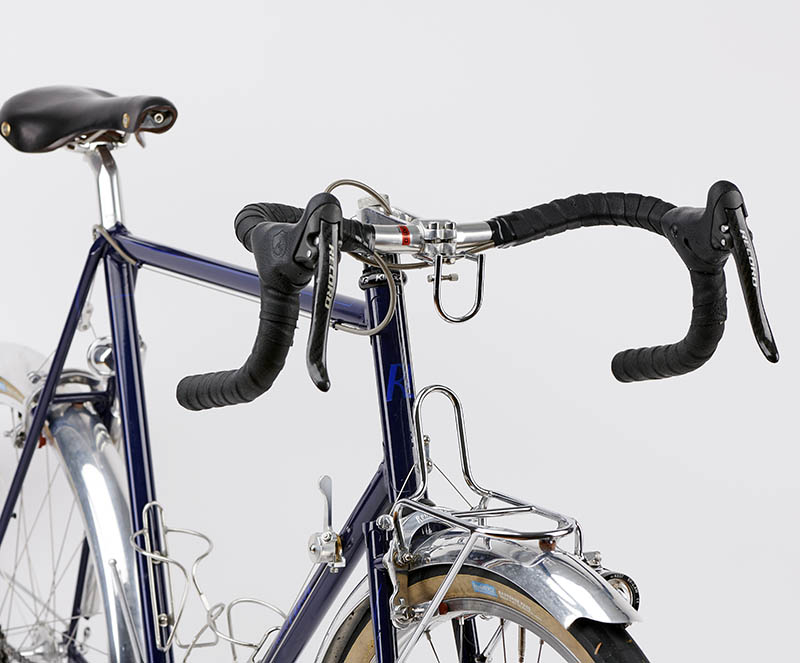
Handlebars are as important for long-distance comfort as the saddle. Generous curves allow moving my hands between different positions, which goes a long way toward avoiding numbness or even nerve damage.
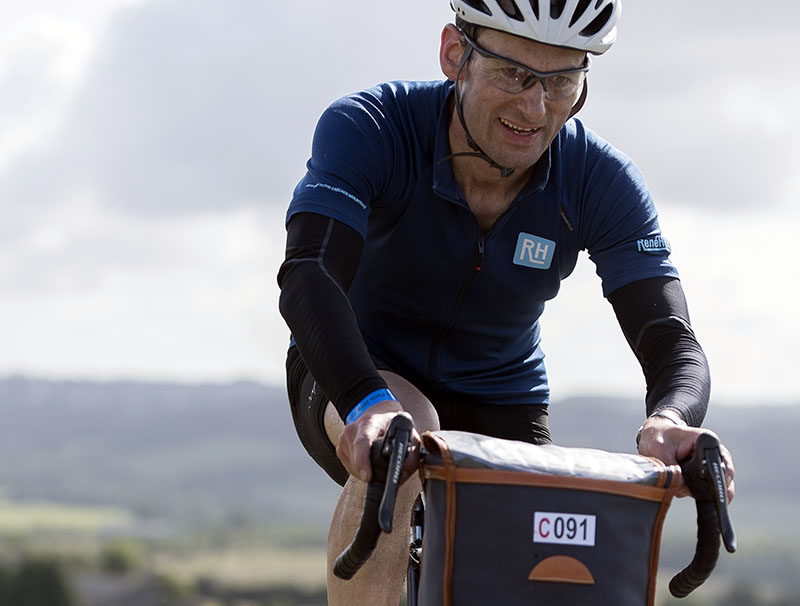
During these long rides, it’s important that the handlebars have just the ‘right’ shape. That is where the Rene Herse randonneur handlebars come in. They bend upward to create a convex shape on the ramps that fits into my palms. You can see me holding the bars in that position – on the ramps behind the brake lever hoods. It’s a supremely comfortable position, and it’s the one I use the most when riding long distances. For it to work well, the shape has to be ‘just right’ – an ‘almost-right’ randonneur bar is worse than a standard handlebar. We tested dozens of bars until we found the perfect shape.
I also like the relatively deep drops, which allowed me to get very aero when heading into strong 3/4 crosswinds during the last stretch. Having very distinct hand positions means that my back isn’t always at the same angle, which also helps to prevent fatigue.
Our handlebars are made it from superlight and superstrong aluminum. At just under 300 g, they don’t give up much weight to carbon bars, while offering more comfort and safety. (They’ll bend rather than shatter if the bike falls over.) Mine are 42 cm wide. With my elbows bent, my forearms angle inward, and wider bars hurt my shoulders. Narrower bars also are more aero, which I appreciated during last year’s windy PBP.
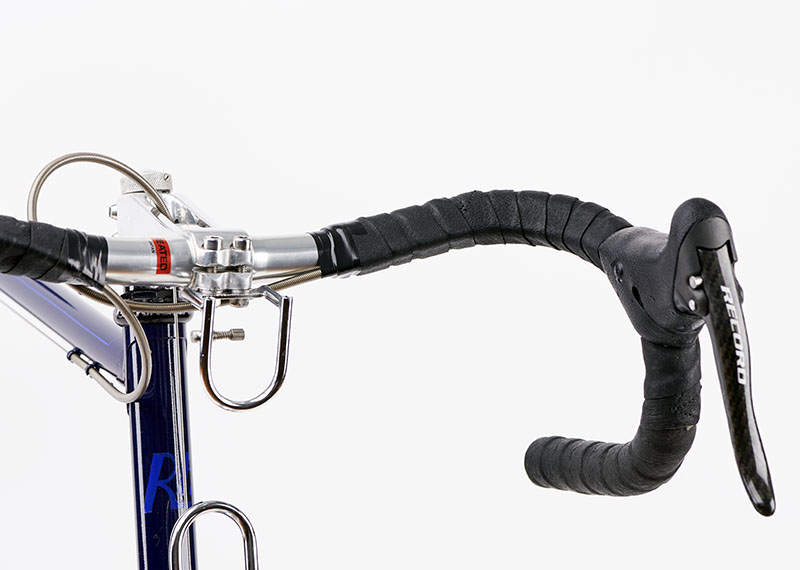
There’s a lot of talk about padded bar tape and brake lever hood shapes. For me, these matters are less important. The brake hoods require my wrists to be parallel to the axis of the bike, but when I bend my elbows for shock absorption, my wrists don’t align that way. That is why I like bars with generous curves: I can find the angle where my wrists fall naturally. I use Campagnolo carbon brake levers since they are light, of high quality, and the shape is nice.
Padded bar tape is one of those things that make sense at first sight: It’s intended to absorb vibrations that fatigue your body and hurt your hands. Yet vibrations must be absorbed close to the source – near the road surface. Once the entire bike is vibrating, there’s too much mass going up and down to absorb with just a bit of foam. That’s why I run supple tires, where only a few grams of tire casing have to flex to absorb the ‘road buzz,’ rather than 9.2 kg (20.3 lb) of bike.
For me, bar tape serves to make the bars less slippery and nice to the touch. That’s why I like Maware leather tape. It’s made from pigskin, so it’s thin and doesn’t have raised edges like many leather tapes. And it feels wonderful, making me smile every time I touch it during the long ride.
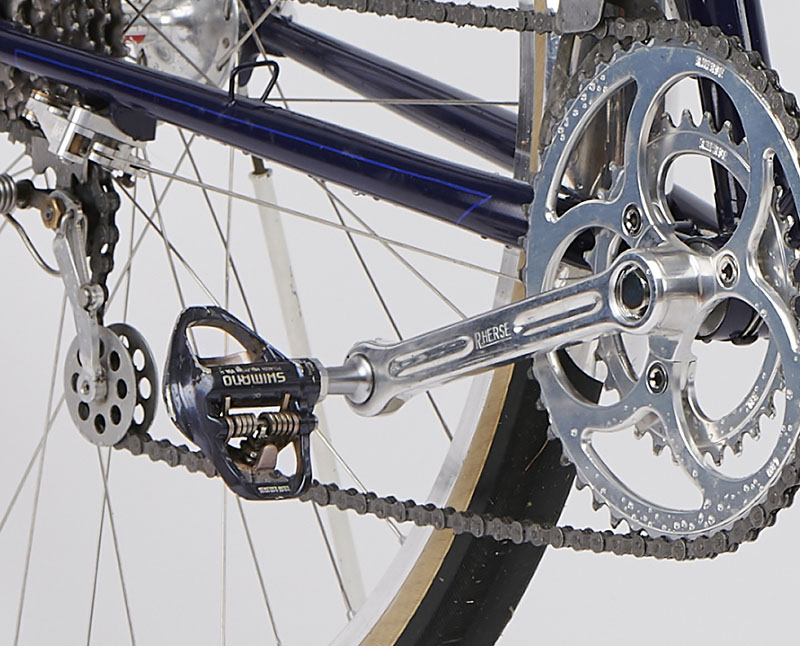
The last contact point are the pedals. I use spd pedals because I need walkable shoes. Even though Rene Herse sells wonderful MKS pedals, I prefer the simple shape of Shimano’s A600. If I could get the A600s with the silky-smooth MKS bearings, I’d be even happier.
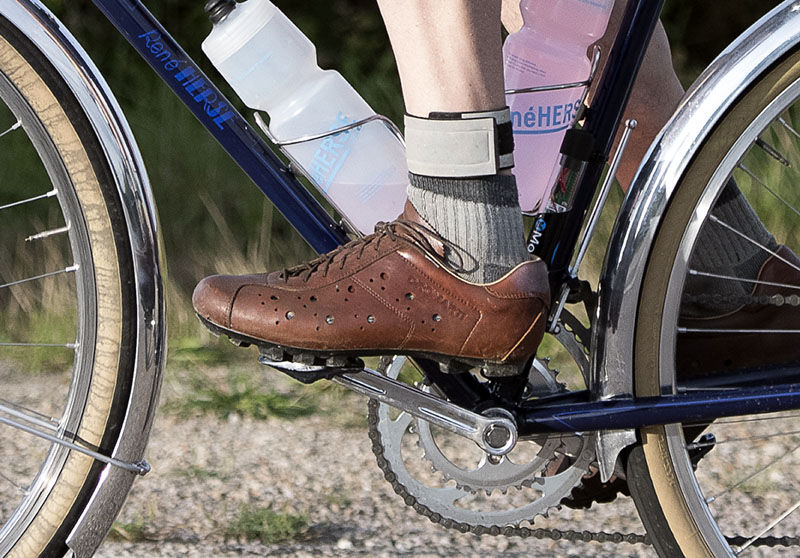
Even more important than the pedals are the shoes. I’ve been riding Dromarti’s leather shoes for years now, because they are simply perfect. The soles are stiff enough, so the small spd cleats don’t cause pressure points even after 56 hours on the road. And yet the shoes have a little flex, which prevents my feet from getting tired. They Dromartis are great for walking, and the leather upper breathes, so I don’t have problems with hot feet any longer. (When I used shoes made from artificial leather, I often stopped and stepped into puddles or creeks during hot days, because my feet hurt so much.) When Dromarti closed a few years ago, I almost panicked. Fortunately, I wasn’t the only one who couldn’t live without these shoes, and Dromarti was bought by a long-time customer. I’m glad the shoes are available again, even though mine don’t show any signs of wearing out.
People often wonder how we can ride 1200 km (750 miles) without any real stops. Having a bike that is comfortable from the first to the last moment is a big part of that. The sophistication of a good randonneur bike lies in hundreds of small details. Things like a great handlebar shape aren’t immediately obvious. They make a big difference not just on these long rides, but every time I head out on my bike.
Other parts in this series:
- My PBP bike: the frame
- My PBP bike: the wheels
- My PBP bike: contact points
- Why I choose centerpull brakes
- My PBP bike: fenders
- My PBP bike: rack and bag
- My PBP bike: lights
- My PBP bike: derailleurs
Photo credit: Nicolas Joly (all photos).


